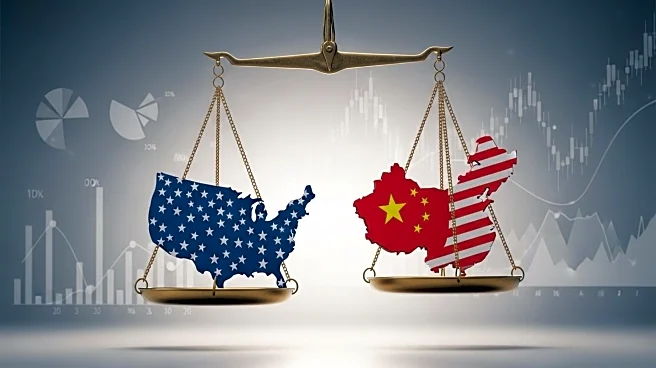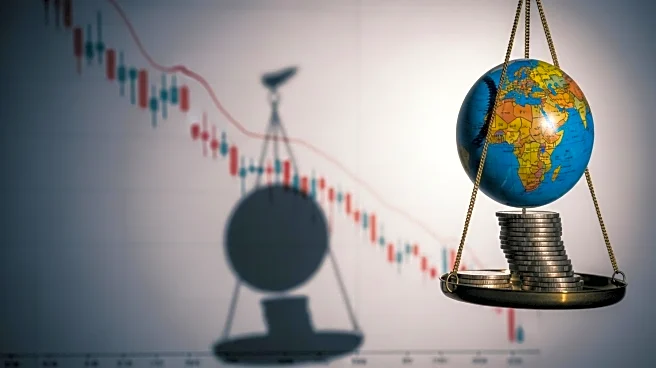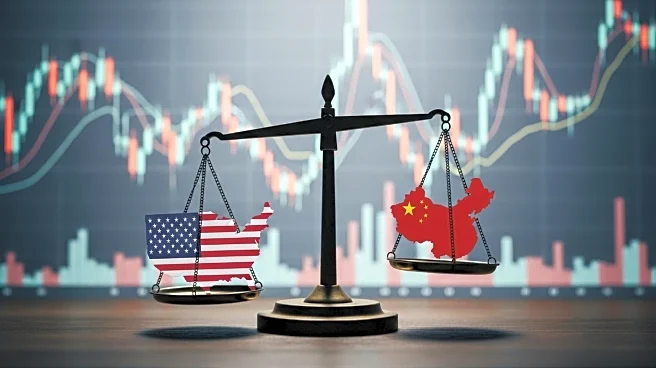What's Happening?
President Trump has announced a 100% tariff on China, erasing $2 trillion from the stock market. This decision comes during a federal government shutdown and amidst concerns over an AI valuation bubble. The tariffs are expected to increase inflation and pressure GDP growth. The announcement led to significant market declines, with the S&P 500 falling 2.7%, the Dow Jones dropping 878 points, and the Nasdaq sinking 3.6%. The tariffs are part of a broader trade war strategy, with plans to increase tariffs to 130% and impose software export controls.
Why It's Important?
The new tariffs exacerbate existing economic challenges, including inflation and market uncertainty. The timing, during a government shutdown, adds to the complexity, potentially affecting federal operations and economic stability. The tariffs could lead to higher consumer prices and impact U.S. businesses reliant on Chinese imports. The market reaction underscores investor concerns about the economic impact and the potential for prolonged trade tensions, which could hinder economic recovery and growth.
What's Next?
The economic landscape will be shaped by the implementation of these tariffs and their impact on trade relations with China. Businesses will need to adapt to increased costs, potentially leading to price adjustments and strategic shifts. The government shutdown's duration and resolution will also play a critical role in economic stability. Investors and policymakers will be closely monitoring the situation, with potential implications for future trade negotiations and economic policy decisions.
Beyond the Headlines
The tariffs highlight the geopolitical tensions between the U.S. and China, with broader implications for global trade dynamics. The decision reflects a strategic move by President Trump to assert economic pressure, but it also raises questions about the long-term impact on international relations and economic cooperation. The intersection of trade policy and technological advancements, such as AI, adds another layer of complexity to the economic environment.












